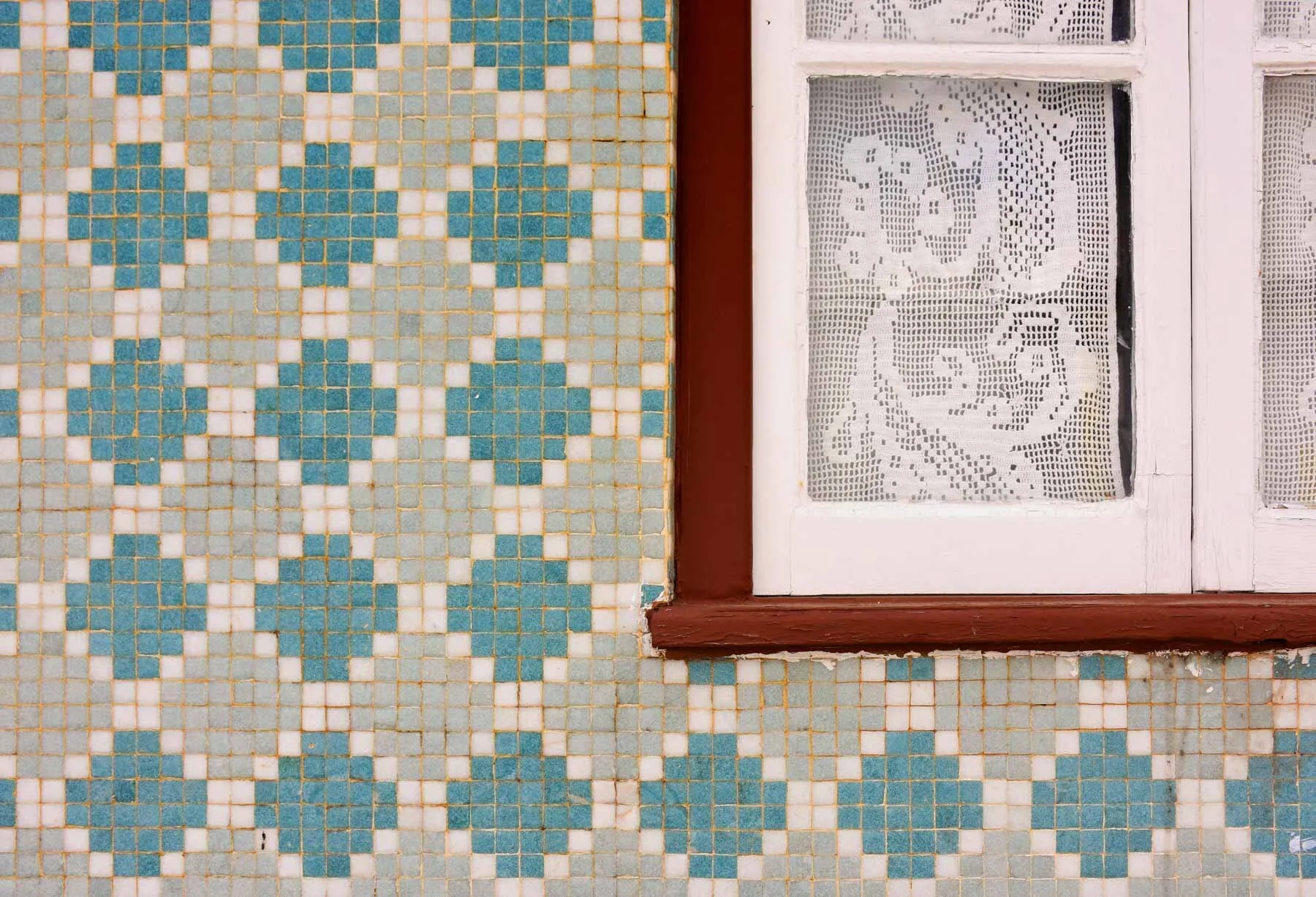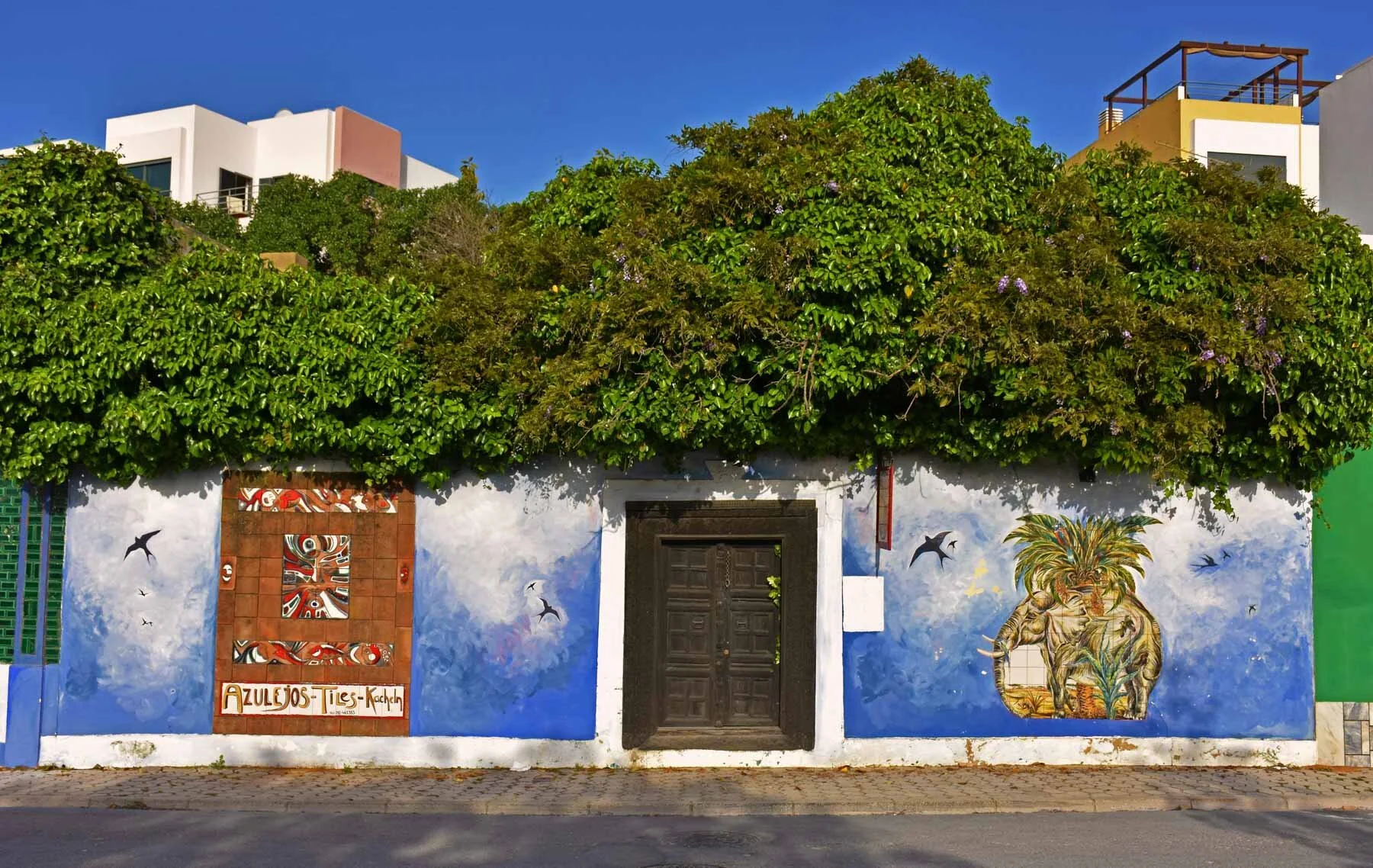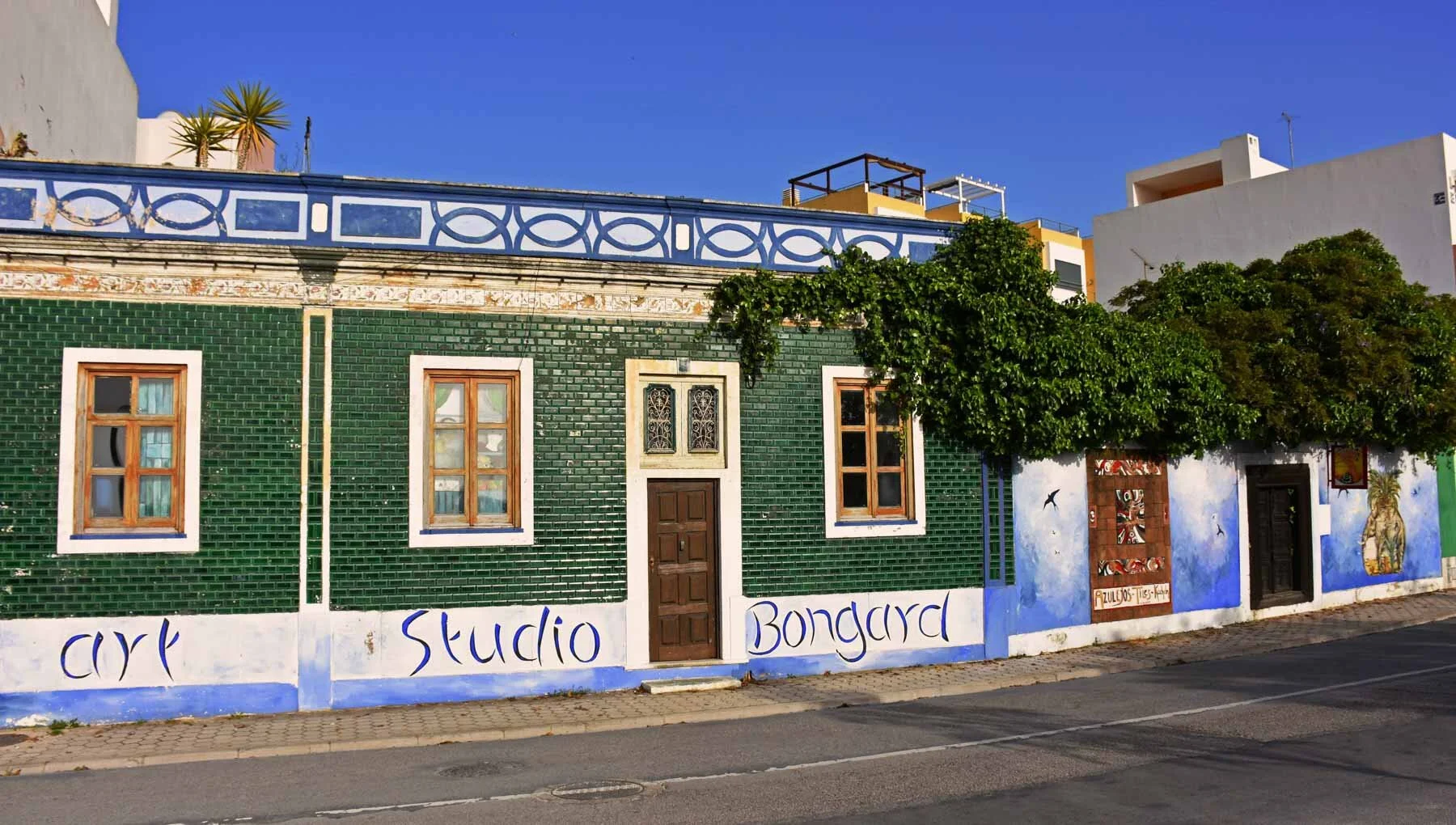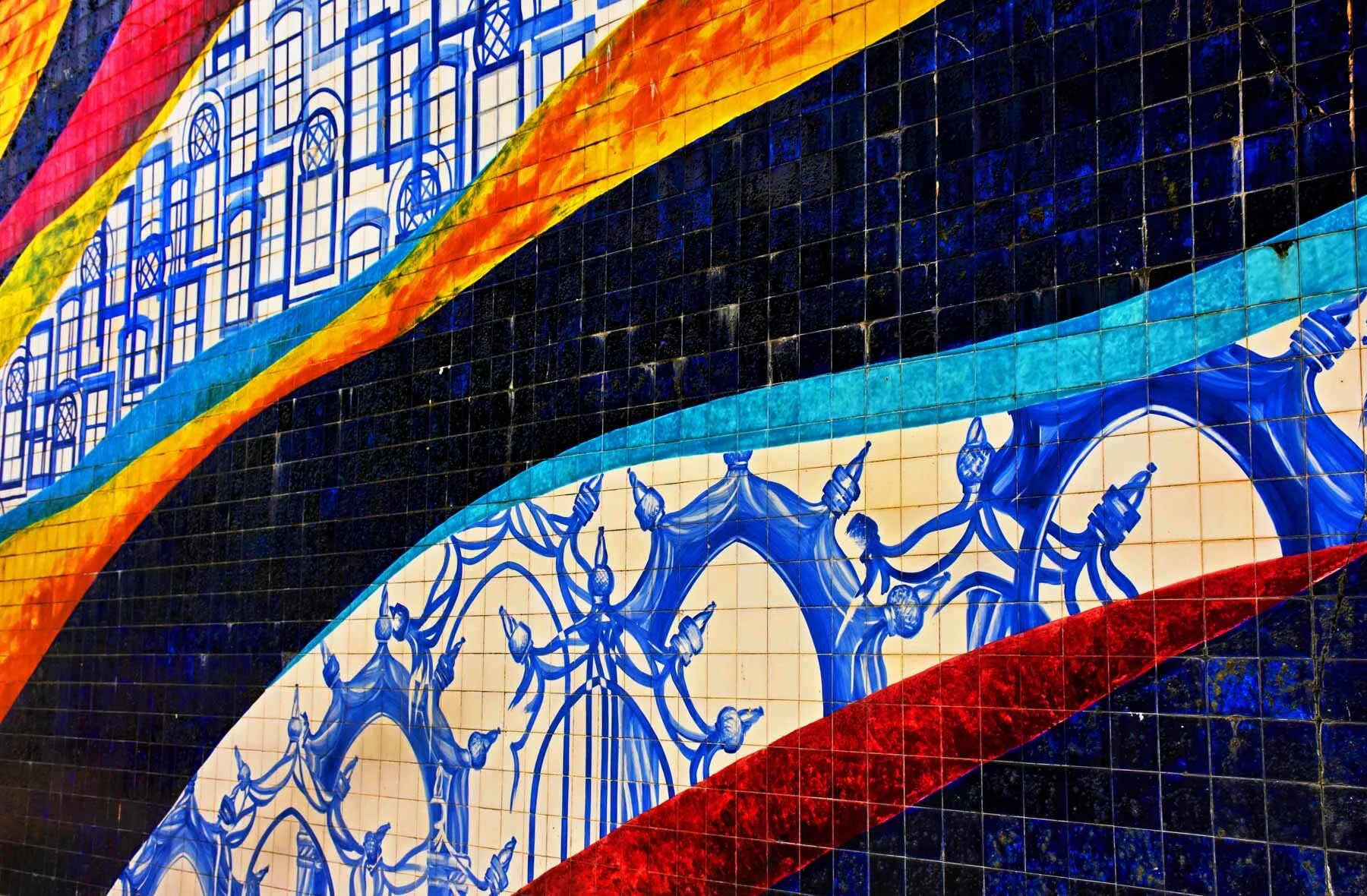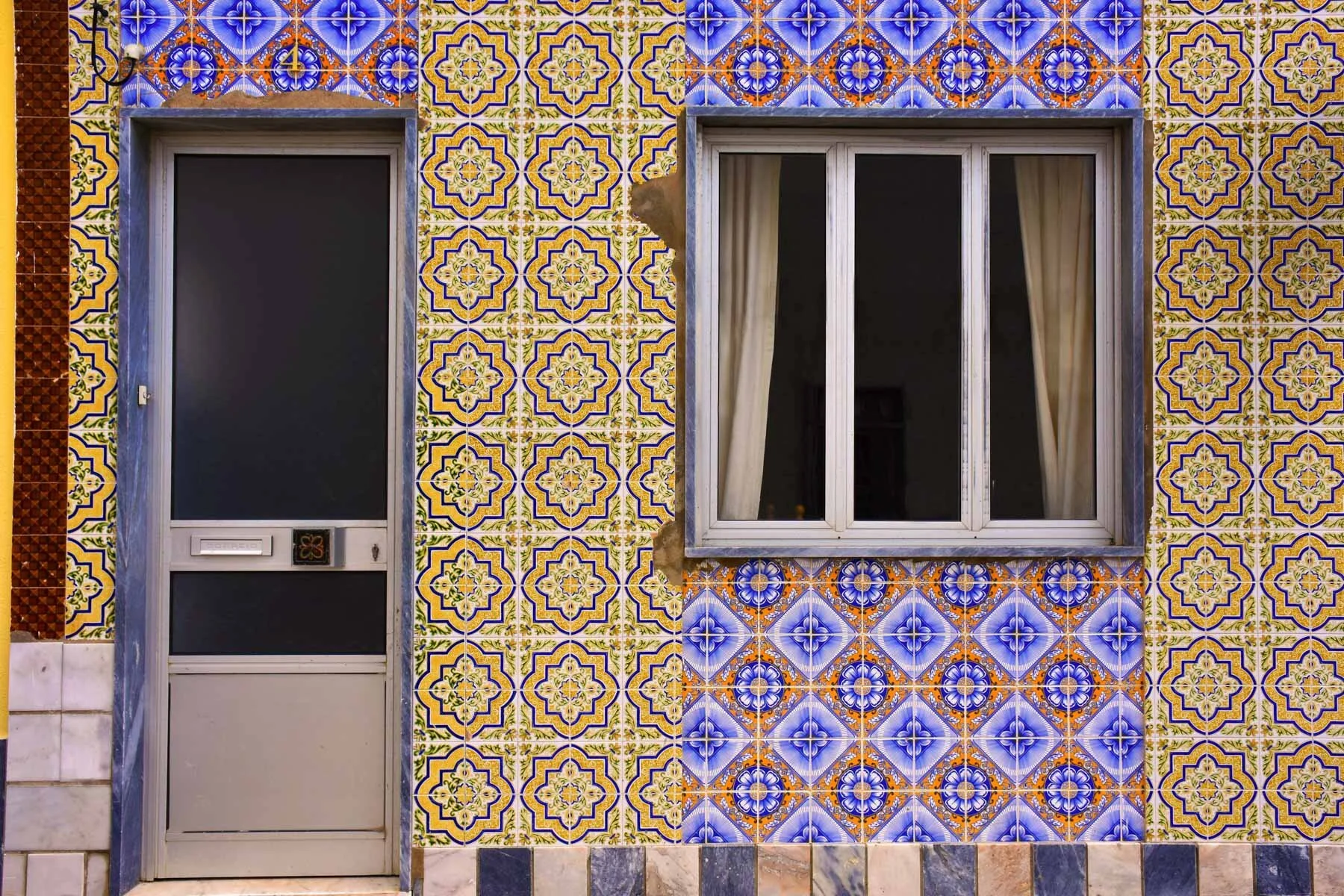The tiles of Portugal
by Emily Cathcart
Portugal provides countless sensory pleasures — from warm sand between your toes on an Algarve beach at sunset, to the first sip of a glassful from the Douro and Alentejo vineyards; and from the rich custard sweetness of a fresh-from-the-oven pastel de nata, to the feeling of time travel as you glide through Lisbon’s neighbourhoods on a century-old wooden tram.
But one visual treat in particular grabs the attention again and again: the tiles. It’s virtually impossible to visit Portugal without noticing them: wherever you look, they adorn everything. Walls of churches and monasteries, grand palaces, ordinary houses, park seats, fountains, benches at bus stops, shops, restaurants, bars and train stations. In their fanciest traditional form they often portray detailed historic scenes; more often, they simply serve as humble street signs, nameplates, or house numbers.
But these ubiquitous decorations — called azulejo (from Arabic al-zulayj, “little stone”) — didn’t originate here. From North African mosaic origins, tiny tiles travelled to Spain and eventually made their way to Portugal, where they were embraced and elevated to a local art form (enlarging to encompass more substantially-sized specimens in the process). Still used in both ornate and everyday applications, they remain an important and distinctive part of the country's architecture.
And as much as I enjoy the many, many other delights on offer in this beautiful part of the world, I can’t help obsessing over new and exciting discoveries of azulejo at every turn. From Lisbon’s most elaborate examples to the more commonplace Algarve highlights shown here — for me, this is what makes Portugal a paradise.



